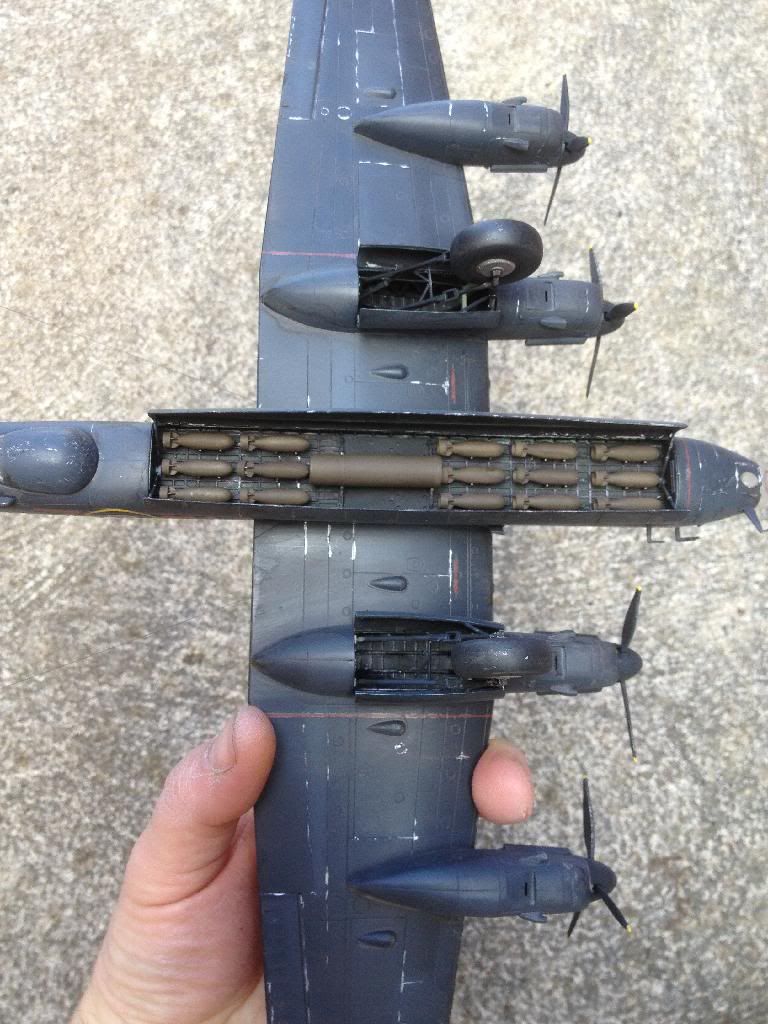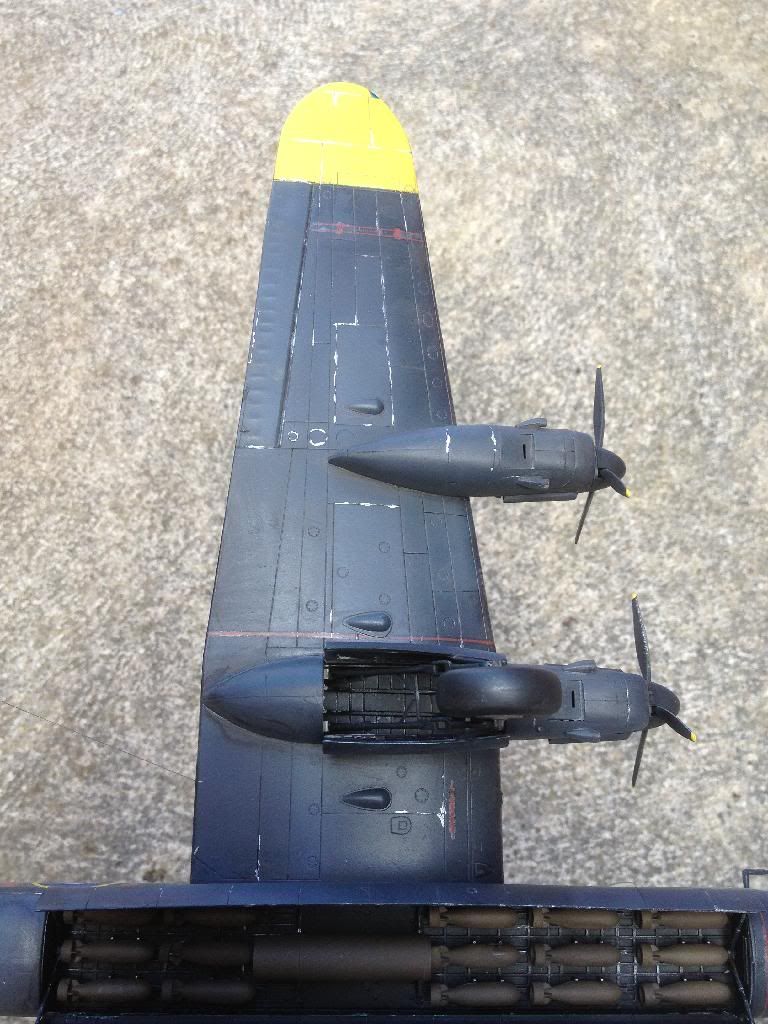The Avro Lancaster is a British four-engined Second World War heavy bomber designed and built by Avro for the Royal Air Force (RAF). It first saw active service with RAF Bomber Command in 1942 and, as the strategic bombing offensive over Europe gathered momentum, it became the main heavy bomber used by the RAF, the RCAF, and squadrons from other Commonwealth and European countries serving within the RAF, overshadowing its close contemporaries the Handley Page Halifax and Short Stirling. The "Lanc", as it was affectionately known, thus became the most famous and most successful of the Second World War night bombers, "delivering 608,612 long tons of bombs in 156,000 sorties."
The Lancaster, an evolution of the troublesome Avro Manchester, was designed by Roy Chadwick and was powered by four Rolls-Royce Merlins, or, in one version, Bristol Hercules engines.
A long, unobstructed bomb bay meant that the Lancaster could take even the largest bombs used by the RAF, including the 4,000 lb (1,800 kg), 8,000 lb (3,600 kg), and 12,000 lb (5,400 kg) blockbusters, loads often supplemented with smaller bombs or incendiaries. The versatility of the Lancaster was such that it was chosen to equip 617 Squadron, and was modified to carry the Barnes Wallis designed Upkeep "Bouncing bomb" for Operation Chastise, the attack on Germany's Ruhr Valley dams. Although the Lancaster was primarily a night bomber, it excelled in many other roles, including daylight precision bombing: in the latter role some Lancasters were adapted to carry the 12,000 lb (5,400 kg) Tallboy and, ultimately, the 22,000 lb (10,000 kg) Grand Slam earthquake bombs (also designed by Wallis).
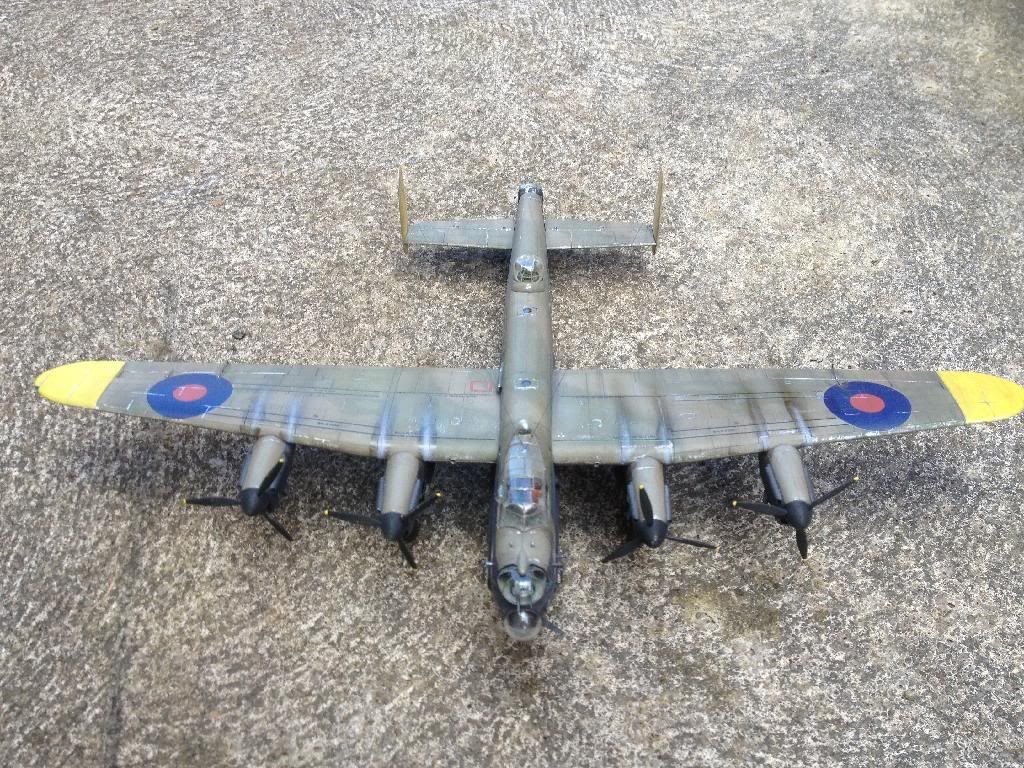
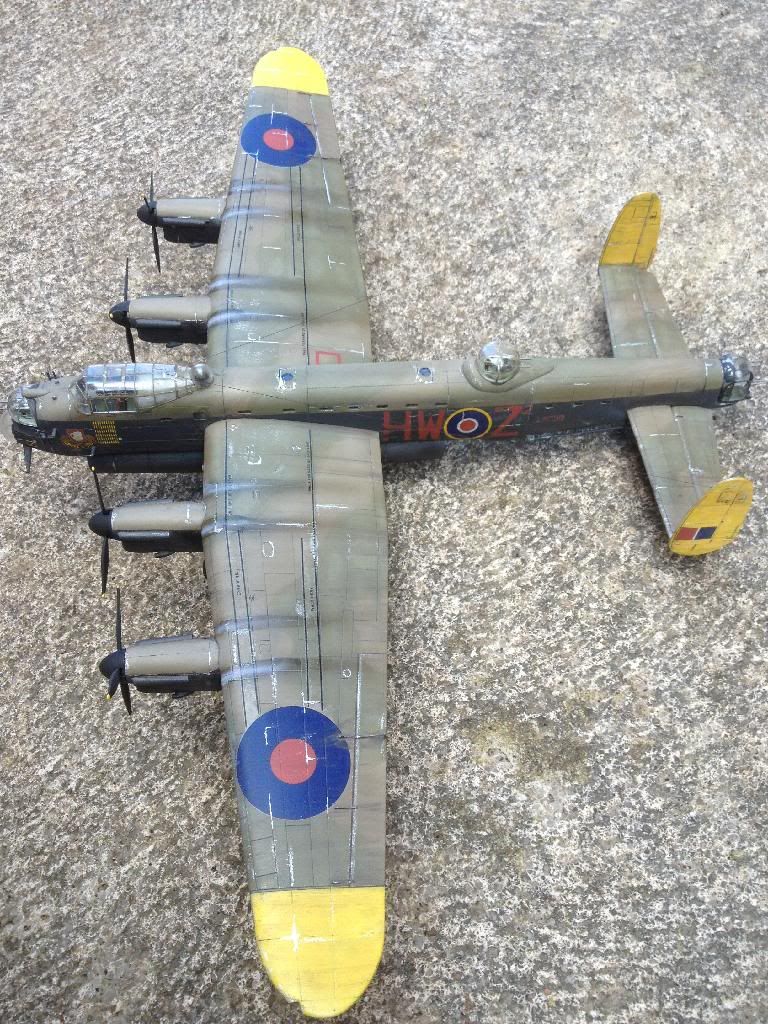
The origins of the Lancaster stem from a twin-engined bomber design submitted to meet Air Ministry Specification P.13/36, which was for a new generation of twin-engined medium bombers for "worldwide use", the engine specified as the Rolls-Royce Vulture. The resulting aircraft was the Manchester, which, although a capable aircraft, was underpowered and troubled by the unreliability of the Vulture engine. Only 200 Manchesters were built, with the type withdrawn from service in 1942.
Avro's chief designer, Roy Chadwick, was already working on an improved Manchester design using four of the more reliable, but less powerful Rolls-Royce Merlin engines on a larger wing. The aircraft was initially designated Avro Type 683 Manchester III, and later renamed the "Lancaster". The prototype aircraft BT308 was assembled by Avro's experimental flight department at Manchester's Ringway Airport. Test pilot H.A. "Bill" Thorn took the controls for its first flight at Ringway, on Thursday, 9 January 1941. The aircraft proved to be a great improvement on its predecessor, being "one of the few warplanes in history to be 'right' from the start." Its initial three-finned tail layout, a result of the design being adapted from the Manchester I, was quickly changed on the second prototype DG595 and subsequent production aircraft, to the familiar twin-finned specification also used on the later Manchesters.
Some of the later orders for Manchesters were changed in favour of Lancasters; the designs were very similar and both featured the same distinctive greenhouse cockpit, turret nose, and twin tail. The Lancaster discarded the stubby central third tail fin of the early Manchesters and used the wider span tailplane and larger elliptical twin fins from the later Manchester IA.
The Lancaster is a mid-wing cantilever monoplane with an oval all-metal fuselage. The wing was constructed in five main sections, the fuselage in five sections. All wing and fuselage sections were built separately and fitted with all the required equipment before final assembly. The tail unit had twin elliptical fins and rudders. The Lancaster was initially powered by four wing-mounted Rolls-Royce Merlin piston engines driving 13 ft diameter de Havilland Hydromatic three-bladed airscrews. It had retractable main landing gear and fixed tailwheel, with the hydraulically operated main landing gear raising rearwards into the inner engine nacelles.
The majority of Lancasters built during the war years were manufactured by Avro at their factory at Chadderton near Oldham, Greater Manchester, and test flown from Woodford Aerodrome in Cheshire. Other Lancasters were built by Metropolitan-Vickers (1,080, also tested at Woodford), and Armstrong Whitworth. The aircraft was also produced at the Austin Motor Company works in Longbridge, Birmingham, later in the Second World War and postwar by Vickers-Armstrongs at Chester as well as at the Vickers Armstrong factory, Castle Bromwich, Birmingham. Only 300 of the Lancaster B II fitted with Bristol Hercules engines were constructed; this was a stopgap modification caused by a shortage of Merlin engines as fighter production was of higher priority. Many BIIs were lost after running out of fuel.[citation needed] The Lancaster B III had Packard Merlin engines but was otherwise identical to contemporary B Is, with 3,030 B IIIs built, almost all at Avro's Newton Heath factory. The B I and B III were built concurrently, and minor modifications were made to both marks as new batches were ordered. Examples of these modifications were the relocation of the pitot head from the nose to the side of the cockpit, and the change from de Havilland "needle blade" propellers to Hamilton Standard or Nash Kelvinator made "paddle blade" propellers.
Of later variants, only the Canadian-built Lancaster B X, manufactured by Victory Aircraft in Malton, Ontario, was produced in significant numbers. A total of 430 of this type were built, earlier examples differing little from their British-built predecessors, except for using Packard-built Merlin engines and American-style instrumentation and electrics. The final production version was the Mark VII and was made by the Austin motor company at their Longbridge factory. The main design difference with the Mark VII was the use of the American-built Martin dorsal gun turret in place of the English Nash & Thompson one; they had to be mounted slightly further forward on the fuselage for weight balance. All were produced too late for the war in Europe and were tropicalized and upgraded as the Mark VII (FE) for use in the Far East against Japan. A total of 7,377 Lancasters of all marks were built throughout the duration of the war, each at a 1943 cost of £45-50,000.
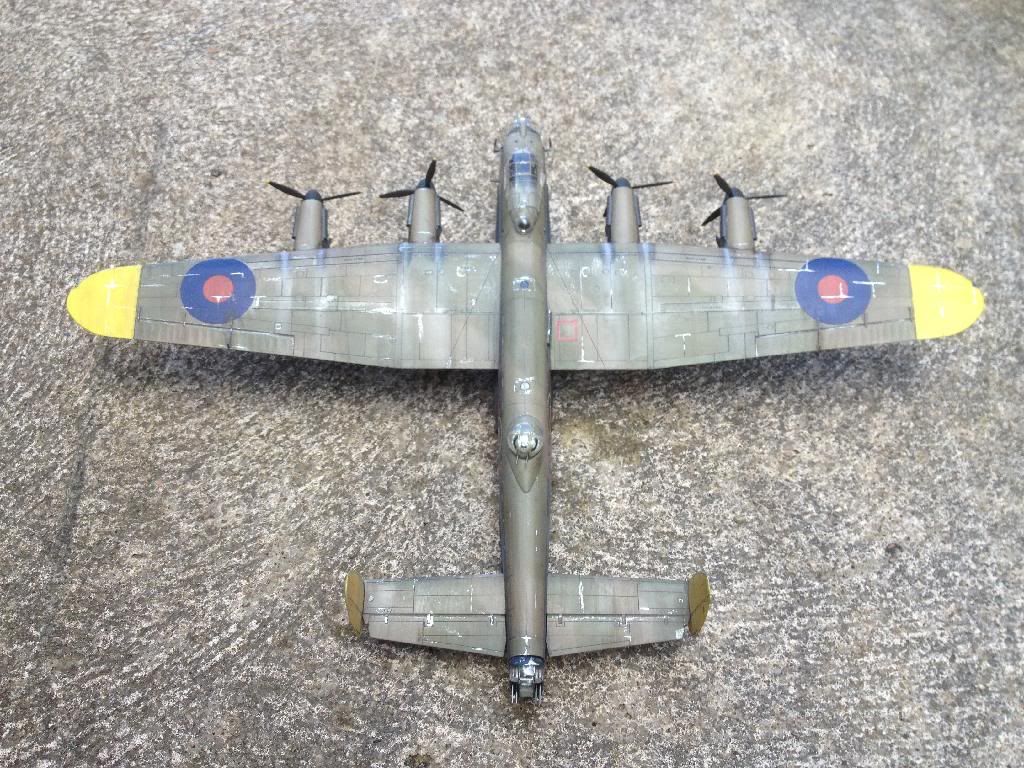
Starting at the nose, the bomb aimer had two positions to man. His primary location was lying prone on the floor of the nose of the aircraft, with access to the bombsight controls facing forward, with the bombsight computer on his left and bomb release selectors on the right. He also used his view out of the large transparent perspex nose cupola to assist the navigator with map reading. To man the Frazer Nash FN5 nose turret, he stood up placing himself in position behind the triggers of the twin .303 in (7.7 mm) guns. Ammunition for the turret was 1,000 rounds per gun (rpg). The bomb aimer's position contained the nose emergency hatch in the floor; at 22 inches by 26.5 inches (two inches narrower than the Halifax escape hatch) it was difficult to exit through while wearing a parachute. Compared with other contemporary aircraft, the Lancaster was not an easy aircraft to escape from; in a Halifax, 25% of downed aircrew baled out successfully, and in American bombers (albeit in daylight raids) it was as high as a 50% success rate while only 15% of the Lancaster crew were able to bale out. Operational research experts (Freeman Dyson, amongst others) attempted unsuccessfully to have the escape hatch enlarged.
The flight engineer on a Lancaster B Mark III checks settings on the control panel from his seat in the cockpit
Moving back, on the roof of the bomb bay the pilot and flight engineer sat side by side under the expansive canopy, with the pilot sitting on the left on a raised portion of the floor (almost all British bombers, and most German bombers, had only a single pilot seat as opposed to American practice of carrying two pilots, or at least having controls for two pilots installed). The flight engineer sat on a collapsible seat (known as a "second dicky seat") to the pilot's right, with the fuel selectors and gauges on a panel behind him and to his right. The pilot and other crew members could use the panel above the cockpit as an auxiliary emergency exit while the mid-upper gunner was expected to use the rear entrance door to leave the aircraft. The tail gunner escaped by rotating his turret to the side and dropping out backwards through the two rear turret
Behind the pilot and flight engineer, and behind a curtain fitted to allow him to use light to work, sat the navigator. His position faced to port with a chart table in front of him. An instrument panel showing the airspeed, altitude, and other information required for navigation was mounted on the side of the fuselage above the chart table.
The wireless operator's radios were mounted on the left-hand end of the chart table, facing the rear of the aircraft. Behind these and facing forwards the wireless operator sat on a seat at the front of the main spar. On his left was a window, and above him was the astrodome, used for visual signalling and by the navigator for celestial navigation.
Behind the wireless operator were the two spars for the wing, which created a major obstacle for crew members moving down the fuselage even on the ground. On reaching the end of the bomb bay the floor dropped down to the bottom of the fuselage, and the mid-upper gunner's turret was reached. His position allowed a 360° view over the top of the aircraft, with two Browning .303 Mark IIs to protect the aircraft from above and to the side. The mid-upper gunner sat on a rectangle of canvas that was slung beneath the turret and would stay in position throughout the flight. Ammunition for the turret was 1,000 rounds per gun.
To the rear of the turret was the side crew door, on the starboard side of the fuselage. This was the main entrance to the aircraft, and also could be used as an emergency exit. The Elsan chemical toilet, a type of aircraft lavatory, was located near the spars for the tailplane. At the extreme tail-end of the fuselage, the rear gunner sat in his exposed position in the tail turret, which was entered through a small hatch in the rear of the fuselage. Depending on the size of the rear gunner, the area was so cramped that the gunner would often hang his parachute on a hook inside the fuselage, near the turret doors. Neither the mid-upper nor the rear gunner's position was heated, and the gunners had to wear electrically heated suits to prevent hypothermia and frostbite. Many rear gunners insisted on having the centre section of perspex removed from the turret to improve visibility. The transparencies were difficult to see through at night, particularly when trying to keep watch for enemy night fighters that appeared without notice astern and below the aircraft when getting into position to open fire. This removal of perspex from the turret was called the "Gransden Lodge" modification. Ammunition for the tail turret was 2,500 rounds-per-gun, due to the weight the ammunition being stored in tanks situated near the mid-upper turret's position and fed rearward in runways down the back of the fuselage to the turret.
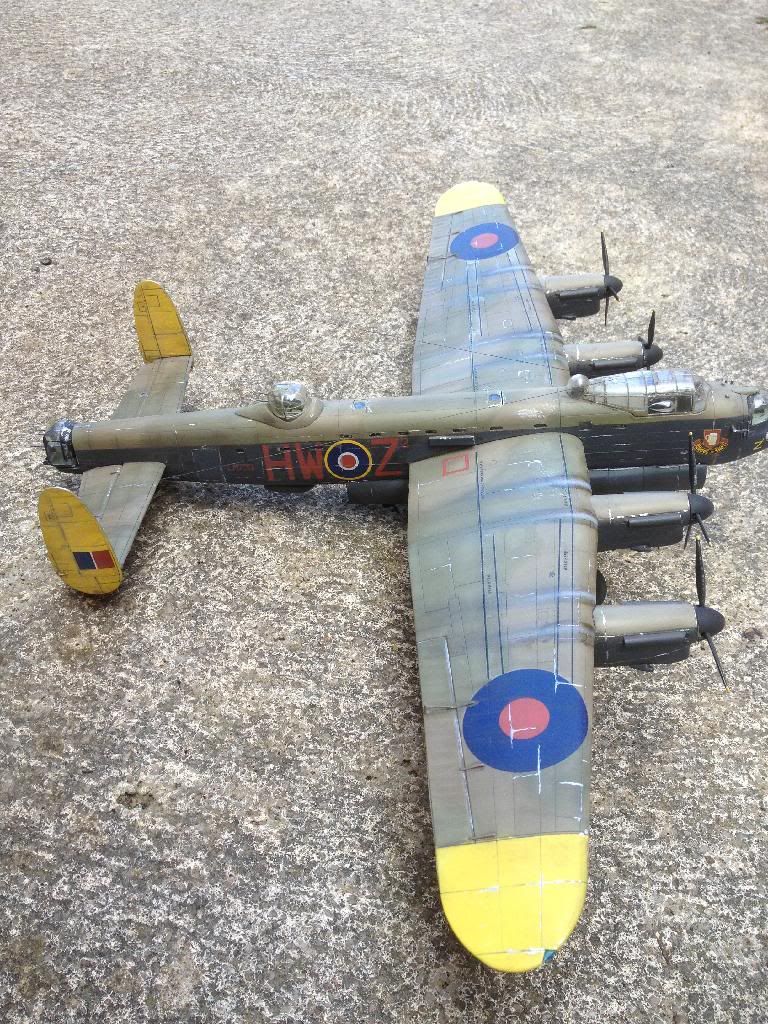
This particular aircraft is from 100 Sqn April 1945, a brief history...
The squadron was put at readiness shortly after war was declared but, for the period to December 1941, there was little involvement operationally whilst still based at Seletar. In November and December 1941 detachments were sent to Fisherman's Bend, in Victoria, Australia. Intended replacement aircraft (Bristol Beauforts) for the remaining squadron were not forthcoming and, as part of operations against advancing Japanese forces, the unit's obsolete Vildebeest aircraft were used in strikes against enemy shipping. Because of this, during January 1942, the squadron lost most of its aircraft in engagements with Japanese fighters. Despite several attempts to remain operational as a combined unit along with No. 36 Squadron RAF, as Japan made advances in the Far East theatre, most personnel eventually became prisoners of war.[5] Others were evacuated to Australia. (In February 1942, No. 100 Squadron, Royal Australian Air Force was formed at RAAF Richmond, near Sydney, from a nucleus of 100 Squadron RAF personnel. Despite this link, the squadron was an RAAF squadron throughout its existence.)
On 15 December 1942, No. 100 Squadron RAF proper was re-formed in the UK, at RAF Grimsby, near Waltham, as a night-time heavy bomber squadron and was part of No. 1 Group, RAF Bomber Command. In January 1943, the squadron received the first of its new complement of Avro Lancasters; the first operation of the squadron was on March 4, 1943 against a U-Boat base at St Nazaire. A few days later the squadron was involved in a raid against Nuremberg in Germany and from then on, in support of Bomber Command's strategic role against Germany, took part in every major raid.[6]
At the end of 1943, the squadron had completed the second largest number of successful operations of units within No. 1 Bomber Command and had the lowest 'loss' rate. On the night of June 5, 1944, the squadron bombed heavy gun batteries in support of the D-Day invasion.[6]
For the last month of the war, the squadron moved to Elsham Wolds in Lincolnshire. In the latter stages of the war and post-war, the squadron was involved in the humanitarian Operations Manna and Exodus.
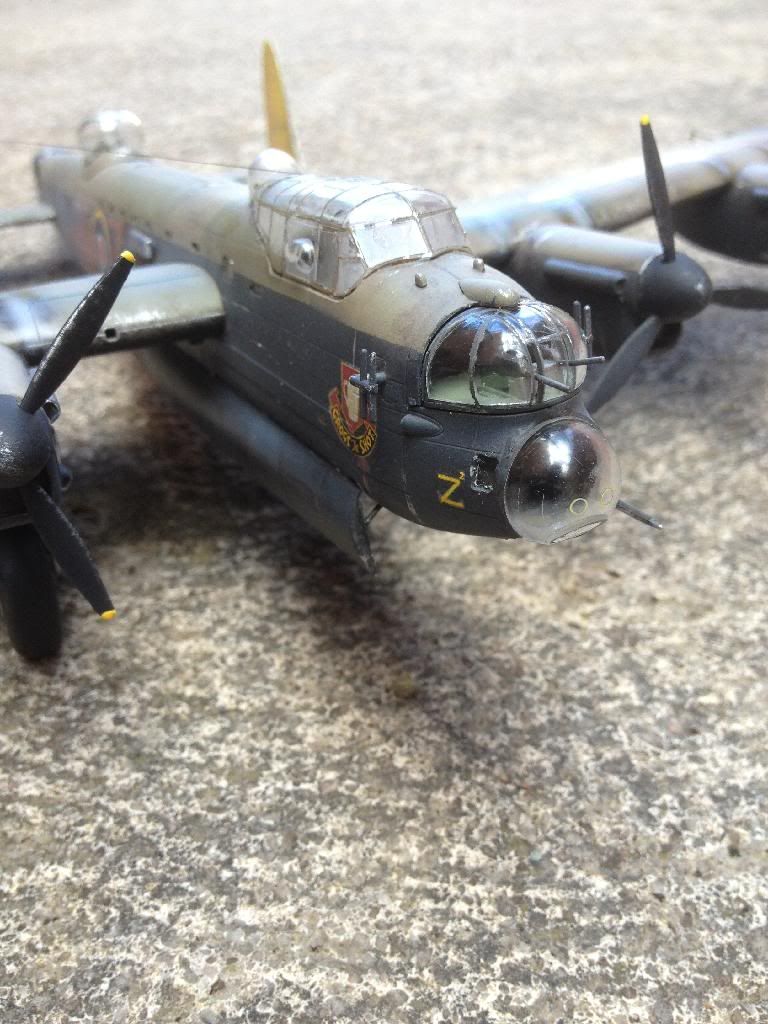

The Avro Lancaster was initially equipped with four Nash & Thomson Frazer Nash hydraulically operated turrets mounted in the nose, tail, mid-upper and underside. The original tail turret was equipped with four Browning .303 Mark II machine guns and all other turrets with two such machine guns.
Nose turret
Only the FN-5A nose turret which was similar to the FN-5 used on the preceding Avro Manchester, the Vickers Wellington and the Short Stirling remained unchanged during the life of the design, except in instances where it was removed entirely.
Ventral turret
The ventral (underside) FN-64 turret quickly proved to be dead weight, being both difficult to sight because it relied on a periscope which limited the gunner's view to a 20 degree arc, and too slow to keep a target within its sights. Aside from early B Is and the prototype B IIs, the FN-64 was almost never used. When the Luftwaffe began using Schräge Musik to make attacks from below in the winter of 1943/1944, modifications were made, including downward observation blisters mounted behind the bomb aimer's blister and official and unofficial mounts for .50 in (12.7 mm) machine guns or even 20 mm cannon, firing through the ventral holes of the removed FN-64. The fitting of these guns was hampered as the same ventral position was used for mounting the H2S blister, which limited installations to those aircraft fitted with bulged bomb bays which interfered with the H2S.
Mid-upper turret
Martin dorsal turret with twin .50 Brownings, seen mounted immediately behind the wing on a Lancaster Mk X
The mid-upper (dorsal or top turret) was an FN-50 on early examples and the very similar FN-150 with improved sights and controls on later examples. On all but the earliest examples this turret was surrounded by a coaming which provided a track for a cam operated interruptor device which prevented the gunner from shooting the tail of his own aircraft. The Mk.VII and late Mk.X Lancasters used the heavier electrically-controlled Martin 250 CE 23A turret equipped with two .50 inch machine guns which was mounted further forward to preserve the aircraft's longitudinal balance, and because it had an internal mechanism to prevent firing on the aircraft itself, it did not require a coaming. Other experimental turrets were tried out, including the FN-79 and the Boulton-Paul Type H barbette system.
Tail turret
Gunner in the Nash & Thompson FN20 tail turret
The tail turret was the most important defensive position and carried the heaviest armament. Despite this, the turrets used, starting with the FN-20, were never entirely satisfactory and numerous designs were tried. The FN-20 was replaced by the very similar FN-120 which used an improved gyroscopic gun sight (GGS). Gunners using both the FN-20 and 120 removed perspex and armour from the turret to improve visibility, but trials by the RAF showed that a Mosquito night fighter was still able to get within a very short distance of the tail gunner without being spotted, confirming what the Luftwaffe had already realised. The Rose turret attempted to improve on the FN turrets by being completely open to the rear (improving visibility and allowing easier emergency egress) and by being fitted with two .50 inch machine guns and was installed in a small number of Lancasters but never became common. Ultimately radar, rather than improved visibility, made the turret more effective. The FN-121 was the Automatic Gun Laying Turret (AGLT), an FN-120 fitted with Village Inn gun-laying radar. Aircraft fitted with Village Inn were used as bait, flying behind the main formations to confront the night fighters that followed the formations and shot down stragglers. This significantly reduced operational losses; and gun-laying radar was added to the last versions of the turret. Before the end of the war Lancasters built in the UK standardized on the FN-82 fitted with two .50 inch machine guns and fitted with gun-laying radar as production allowed, which was also used on early models of the Avro Lincoln. The disadvantage of all radar and radio transmitting systems is that attacking forces can locate aircraft by picking up transmissions.
Later in the war Freeman Dyson made a case for removing all the Lancaster's defensive armament, arguing it would reduce the loss rate by increasing the Lancaster's speed by up to 50 mph (assuming the bomb load was not increased at the same time), and thus make it harder to shoot down. This became even more important when Dyson and Mike O'Loughlin concluded that some of the German night fighters were using Schräge Musik upward firing guns, as the Lancaster had no ventral gun turret to defend itself, although any defence would depend on the crew detecting the attack from underneath. Dyson considered that the modification would be justified even if the aircraft loss rate was unchanged, as two defensive air gunners would not be required, reducing human losses. The case for speed over defensive armament was supported by the Mosquito, whose loss rates were far lower than the Lancaster's. As an example, during the Battle of Berlin (18 November 1943 to 30 March 1944) the average loss rate of the heavy bombers (overwhelmingly Lancasters) was 5.1%, whereas for Mosquitoes it was 0.5%, though a speed-optimised Lancaster would still be up to 50 mph slower than a Mosquito and unlikely to match its low loss rates.

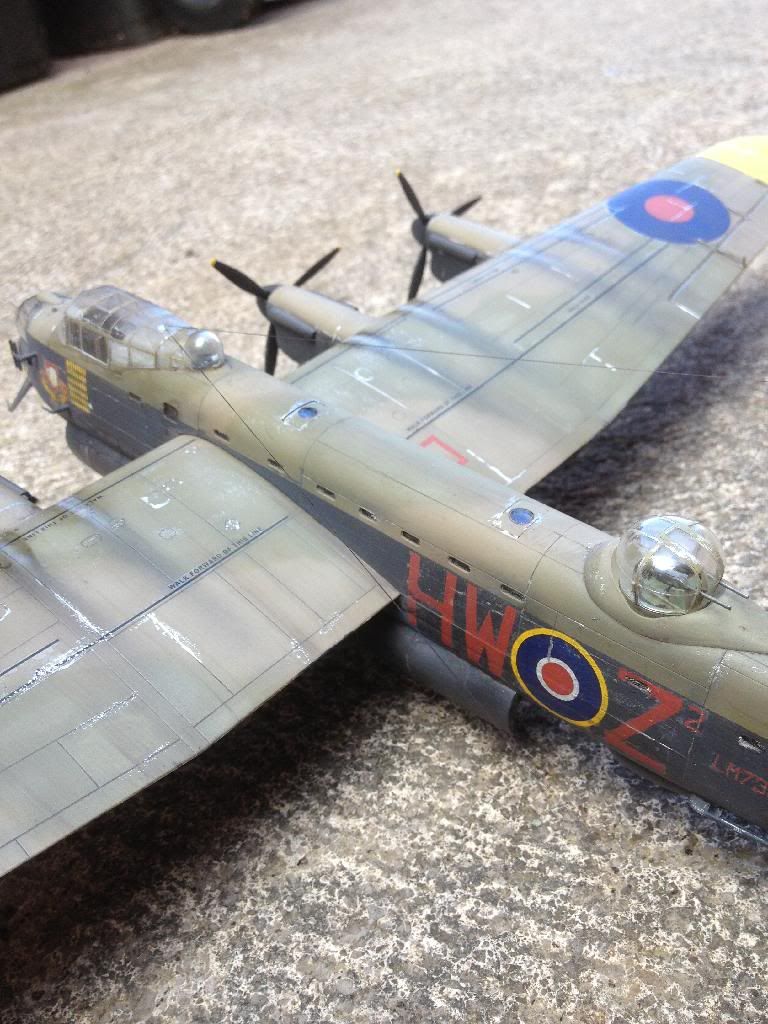
An important feature of the Lancaster was its unobstructed 33 ft (10 m) long bomb bay. At first, the heaviest bomb carried was the 4,000 lb (1,800 kg) high capacity HC "Cookie". Bulged doors were added to 30% of B Is to allow the aircraft to carry 8,000 lb (3,600 kg) and later 12,000 lb (5,400 kg) "Cookies". The Lancaster also carried a variety of smaller weapons, including the Small Bomb Container (SBC) which held 236 4 lb (1.8 kg) or 24 30 lb (14 kg) incendiary and explosive incendiary bomblets; 500 lb (230 kg) and 1,000 lb (450 kg) General Purpose High Explosive (GP/HE) bombs (these came in a variety of designs); 1,850 lb (840 kg) parachute deployed magnetic or acoustic mines, or 2,000 lb (910 kg) armour-piercing (AP) bombs; 250 lb (110 kg) Semi-Armour-Piercing (SAP) bombs, used up to 1942 against submarines; post 1942: 250 lb (110 kg) or 500 lb (230 kg) anti-submarine depth charges.
In 1943 617 Squadron was created to carry out Operation Chastise, the raid against the Ruhr dams. This unit was equipped with B.III (Specials), officially designated the "Type 464 (Provisioning)", modified to carry the 9,250 lb (4,200 kg) "Upkeep" bouncing bomb (which was referred to as a mine). The bomb bay doors were removed and the ends of the bomb bay were covered with fairings. "Upkeep" was suspended on laterally pivoted, vee-shaped struts which sprang apart beamwise when the bomb-release button was pressed. A drive belt and pulley to rotate the bomb at 500 rpm was mounted on the starboard strut and driven by a hydraulic motor housed in the forward fairing. The mid-upper turret was removed and a more bulbous bomb aimer's blister was fitted; this, as "Mod. 780", later becoming standard on all Lancasters, while the bombsight was replaced by a simple aiming device. Two Aldis lights were fitted in the rear bomb bay fairing; the optimum height for dropping "Upkeep" was 60 ft and, when shone on the relatively smooth waters of the dam's reservoirs, the light beams converged into a single spot when the Lancaster was flying at the correct height.
Towards the end of the war, attacking special and hardened targets, other variants of B I Specials were modified to carry the 21 ft (6.4 m) long 12,000 lb (5,400 kg) "Tallboy" or 25.5 ft (7.8 m) long 22,000 lb (10,000 kg) "Grand Slam" "earthquake" bombs: to carry the "Grand Slam" extensive modifications to the aircraft were required. The modifications included removal of the dorsal turret and the removal of two guns from the rear turret; removal of the cockpit armour plating (the pilot's seatback) and installation of Rolls-Royce Merlin Mk 24 Engines which had better take-off performance. The bomb bay doors were removed and the rear end of the bomb bay cut away to clear the tail of the bomb. Later the nose turret was also removed to further improve performance. The undercarriage was strengthened and stronger mainwheels, later used by the Avro Lincoln, were fitted.
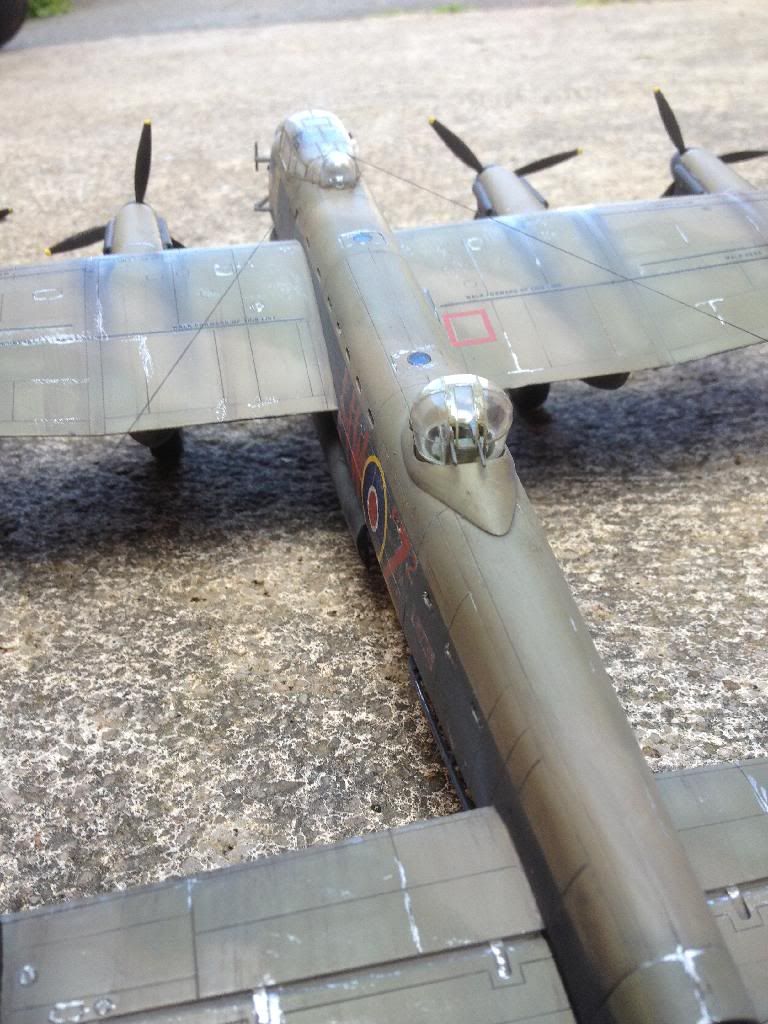
My favourite photo...
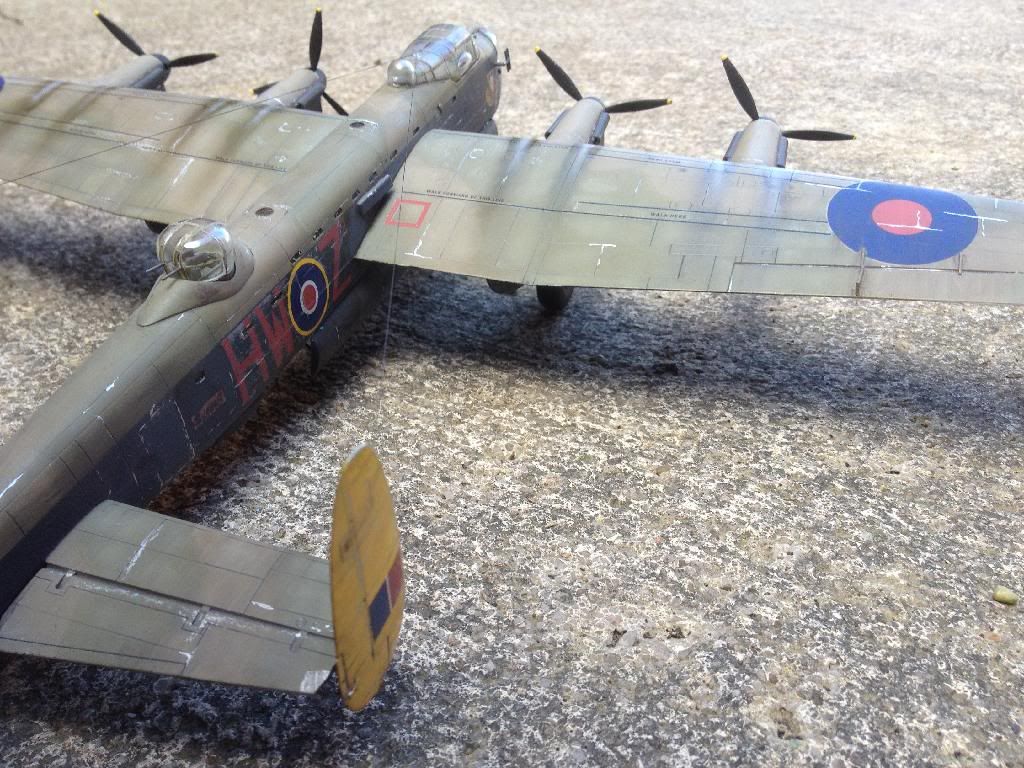
Lancasters flew 156,000 sorties and dropped 608,612 long tons (618,378 tonnes) of bombs between 1942 and 1945. Just 35 Lancasters completed more than 100 successful operations each, and 3,249 were lost in action. The most successful survivor completed 139 operations, and was scrapped in 1947.
Lancasters took part in the devastating round-the-clock raids on Hamburg during Air Chief Marshal Harris's "Operation Gomorrah" in July 1943. A famous Lancaster bombing raid was the 1943 mission, codenamed Operation Chastise, to destroy the dams of the Ruhr Valley. The operation was carried out by 617 Squadron in modified Mk IIIs carrying special drum-shaped bouncing bombs designed by Barnes Wallis. The story of the operation was later made into a film, The Dam Busters. Also famous was a series of Lancaster attacks using Tallboy bombs against the German battleship Tirpitz, which first disabled and later sank the ship.
Adolf Galland (commander of the Luftwaffe fighters) considered the Lancaster to be "the best night bomber of the war", as did his adversary, Arthur "Bomber" Harris, who referred to it as the RAF Bomber Command's "shining sword".
Lancasters from Bomber Command were to have formed the main strength of Tiger Force, the Commonwealth bomber contingent scheduled to take part in Operation Downfall, the codename for the planned invasion of Japan in late 1945. Together with the new Avro Lincoln and Liberators they would have operated from bases on Okinawa; the invasion was made unnecessary by the Japanese surrender.
RAF Lancasters dropped food into the Holland region of the occupied Netherlands, with the acquiescence of the occupying German forces, to feed people who were in danger of starvation. The mission was named 'Operation Manna' after the food manna which is said to have miraculously appeared for the Israelites in the Book of Exodus. The aircraft involved were from 1, 3, and 8 Groups, and consisted of 145 Mosquitoes and 3,156 Lancasters, flying between them a total of 3,298 sorties. The first of the two RAF Lancasters chosen for the test flight was nicknamed "Bad Penny" from the old expression: "a bad penny always turns up." This bomber, with a crew of seven men (five Canadians including pilot Robert Upcott of Windsor, Ontario), took off in bad weather on the morning of 29 April 1945 without a ceasefire agreement from the German forces, and successfully dropped its cargo. A development of the Lancaster was the Avro Lincoln bomber, initially known as the Lancaster IV and Lancaster V. These two marks became the Lincoln B1 and B2 respectively. A civilian airliner was based on the Lancaster, the Lancastrian. Other developments were the York, a square-bodied transport and, via the Lincoln, the Shackleton which continued in airborne early warning service up to 1992.
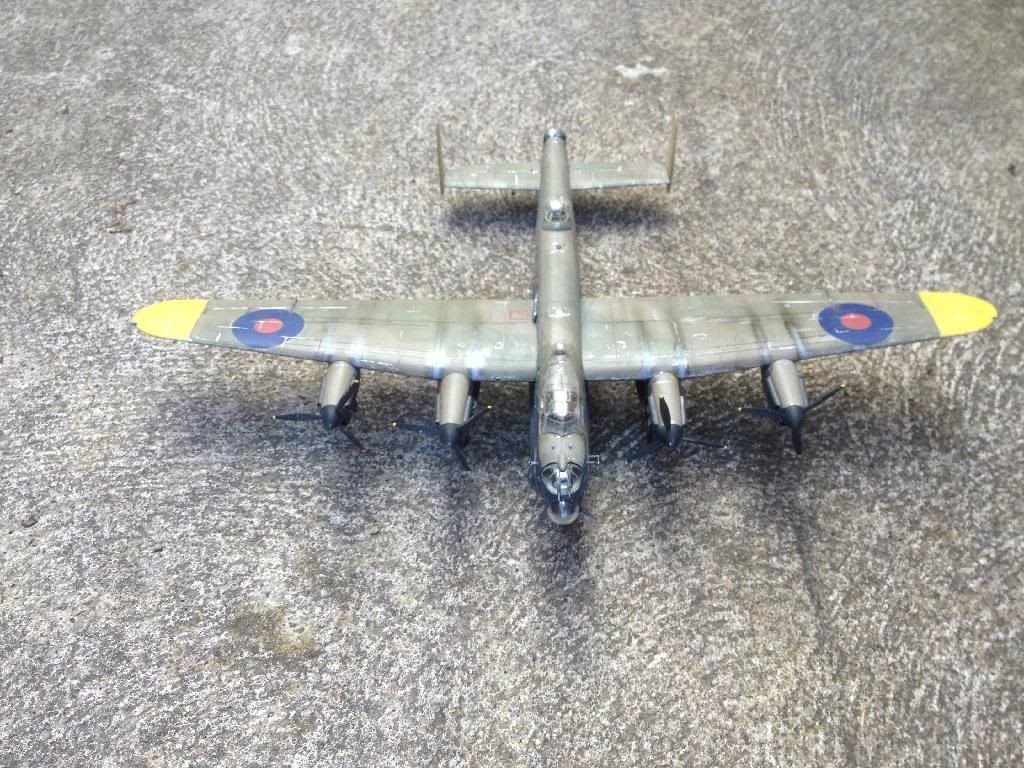
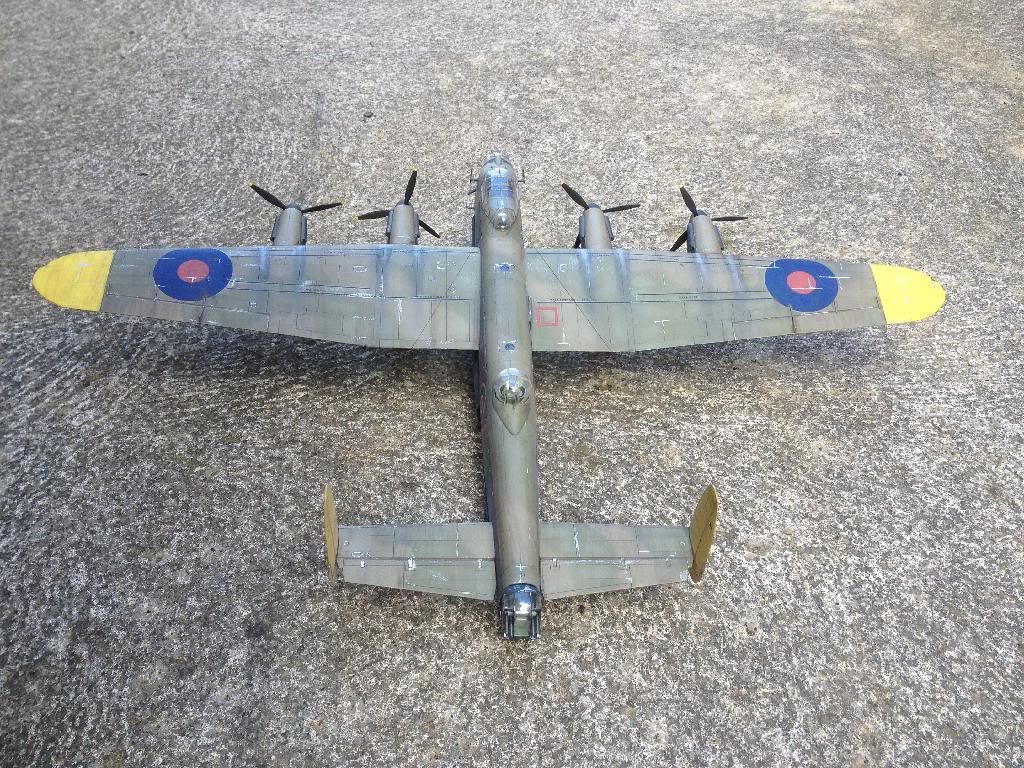
There you go, an enjoyable build this. The kit went together well with no fit issues at all really. The decals were a bit poor though with silvering a bit of a problem. I learnt a couple of new technique's, for me anyway, with the black/grey undersides and panel fading...
I hope you've enjoyed the journey and thanks for looking..
Now where to put her......













